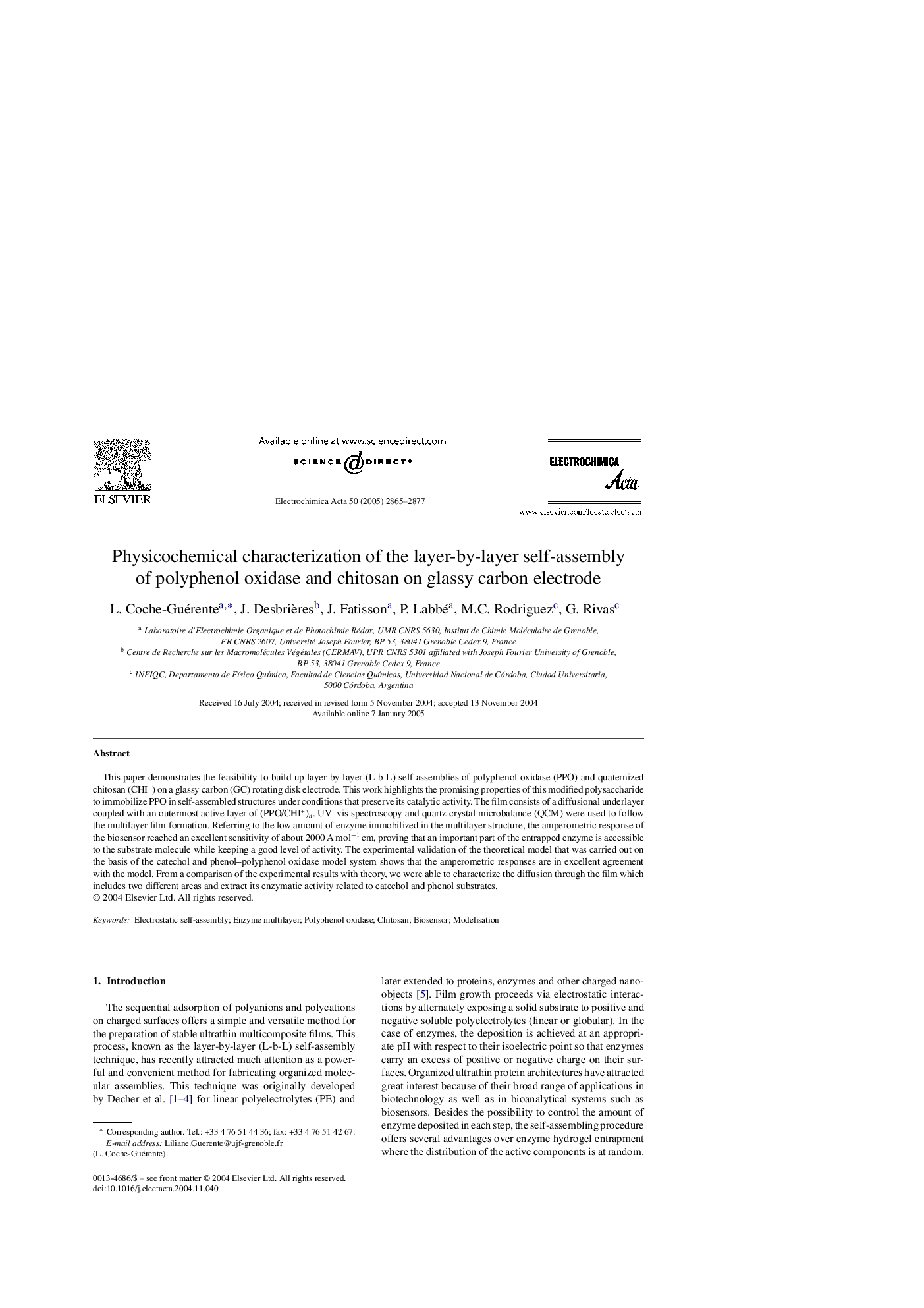| Article ID | Journal | Published Year | Pages | File Type |
|---|---|---|---|---|
| 197100 | Electrochimica Acta | 2005 | 13 Pages |
This paper demonstrates the feasibility to build up layer-by-layer (L-b-L) self-assemblies of polyphenol oxidase (PPO) and quaternized chitosan (CHI+) on a glassy carbon (GC) rotating disk electrode. This work highlights the promising properties of this modified polysaccharide to immobilize PPO in self-assembled structures under conditions that preserve its catalytic activity. The film consists of a diffusional underlayer coupled with an outermost active layer of (PPO/CHI+)n. UV–vis spectroscopy and quartz crystal microbalance (QCM) were used to follow the multilayer film formation. Referring to the low amount of enzyme immobilized in the multilayer structure, the amperometric response of the biosensor reached an excellent sensitivity of about 2000 A mol−1 cm, proving that an important part of the entrapped enzyme is accessible to the substrate molecule while keeping a good level of activity. The experimental validation of the theoretical model that was carried out on the basis of the catechol and phenol–polyphenol oxidase model system shows that the amperometric responses are in excellent agreement with the model. From a comparison of the experimental results with theory, we were able to characterize the diffusion through the film which includes two different areas and extract its enzymatic activity related to catechol and phenol substrates.
